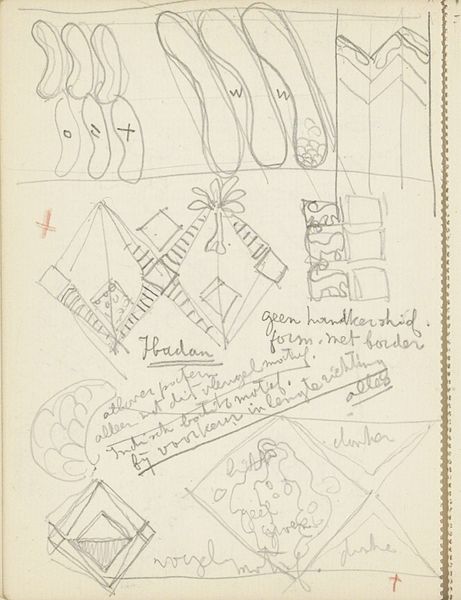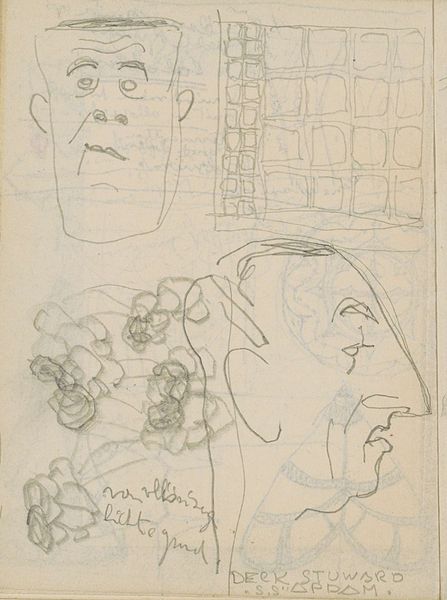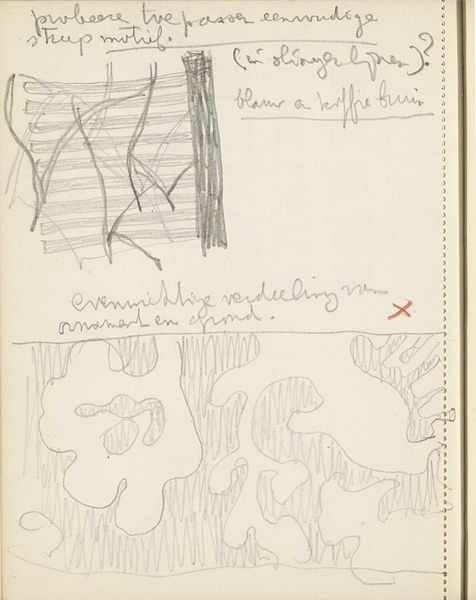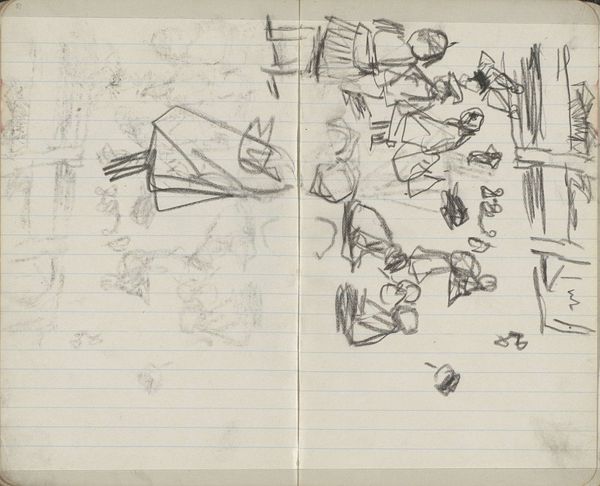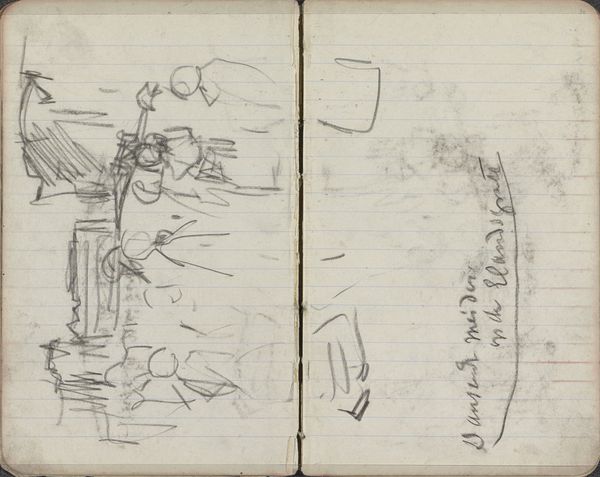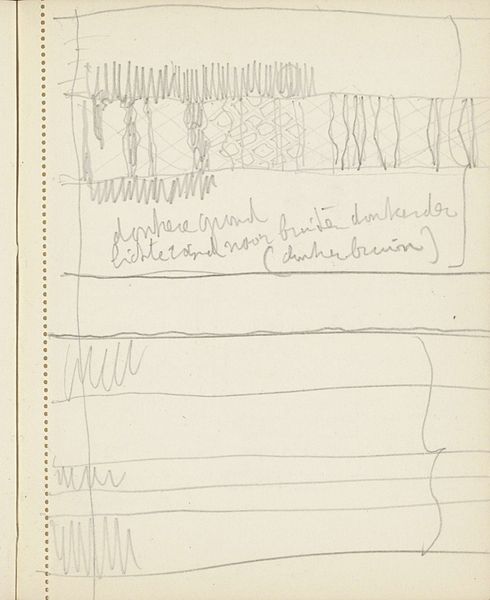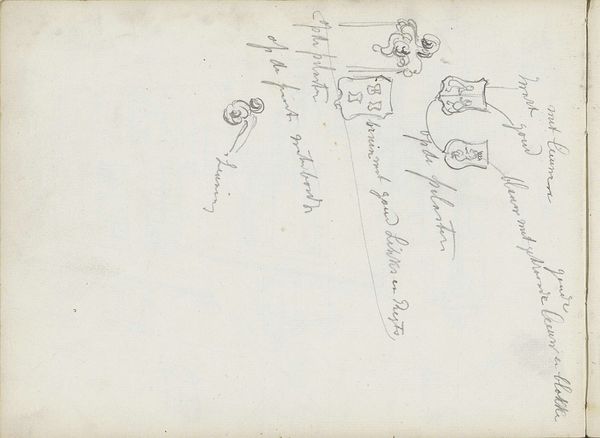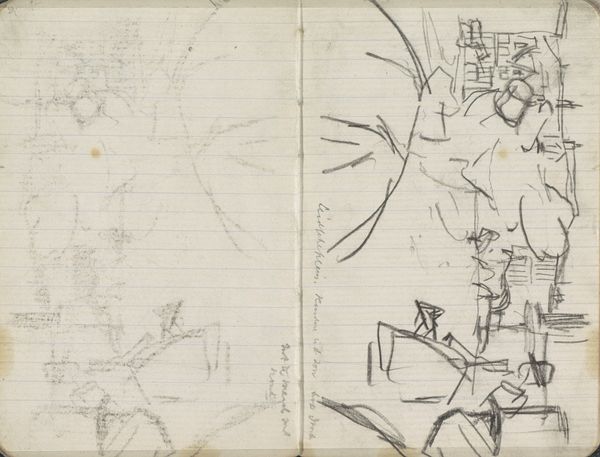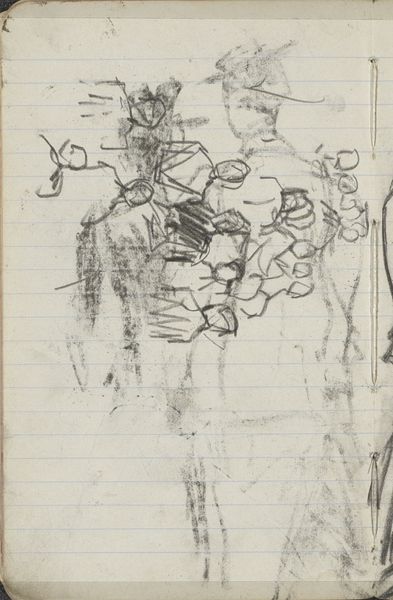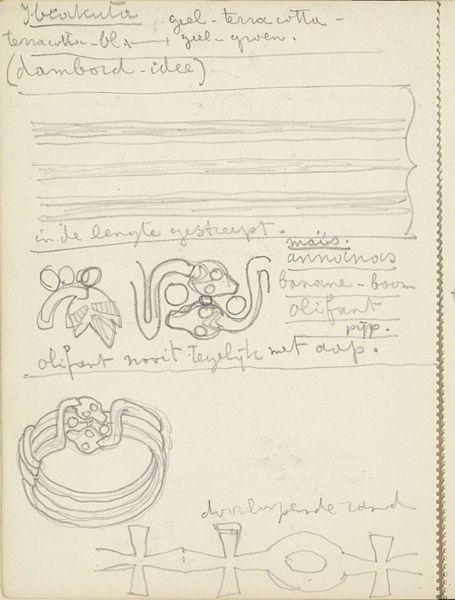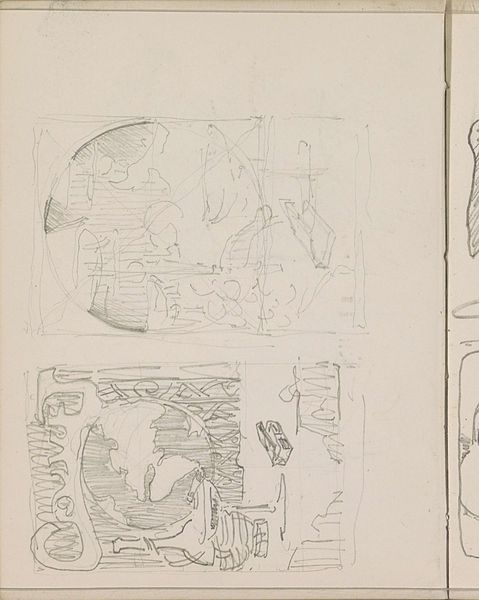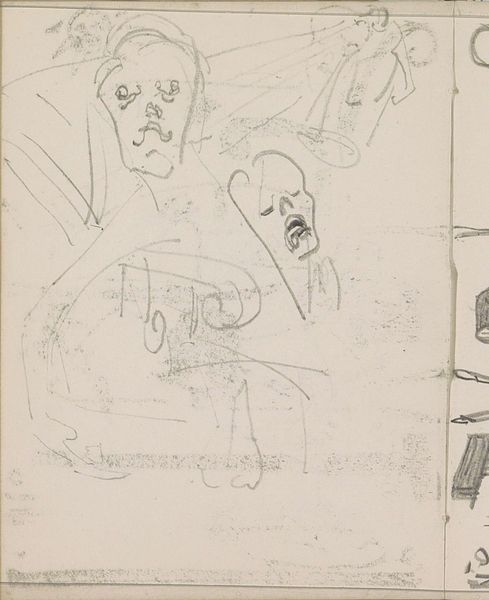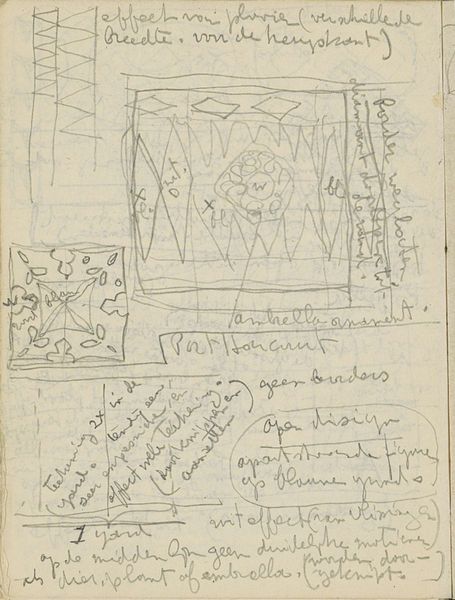
drawing, mixed-media, paper, pencil
#
drawing
#
comic strip sketch
#
mixed-media
#
hand written
#
hand-lettering
#
face
#
old engraving style
#
hand drawn type
#
hand lettering
#
paper
#
personal sketchbook
#
hand-drawn typeface
#
geometric
#
sketch
#
pencil
#
pen work
#
small lettering
Copyright: Rijks Museum: Open Domain
Curator: I'm struck by the overall rawness of this sketch. It feels very immediate, almost like catching a glimpse into the artist's thought process. Editor: Indeed. What we're looking at is titled "Decoratieve patronen uit Onitsha," which translates to "Decorative patterns from Onitsha." It is attributed to Reijer Stolk and was likely created sometime between 1916 and 1945. This mixed-media work incorporates drawing, pencil, and paper, and it resides at the Rijksmuseum. Curator: Mixed media captures its exploratory nature perfectly. I'm particularly drawn to the handwritten text interspersed with the visual elements. It suggests the artist was perhaps jotting down notes on color and texture as they sketched. The inclusion of text hints at potential source material or reference points related to design techniques from the Onitsha region of Nigeria. Editor: From my perspective, the power of the work is rooted in the motifs themselves. The stylized face, the geometric grids, the floral arrangements… each element feels symbolic, imbued with cultural meaning. Curator: Do you think the symbolism originates purely within the Onitsha tradition? Or might we see some interpretation from Stolk’s hand, influenced by his own cultural lens and the inherent limitations of the materials available to him? This seems very much a practice of learning local visual traditions and seeing how those traditions might translate through available technology. Editor: It’s hard to say definitively without deeper historical context, but I think your observation is spot on. Look at the face in particular – the markings have a strong ritualistic feel. We see variations in many other regions. Curator: This type of raw documentation is invaluable for understanding not just what was being depicted, but how visual knowledge circulated at the time. And that labor produces tangible material objects. Editor: I find that glimpse into history very powerful. This piece isn’t just about design, but memory and shared visual language, wouldn't you agree? Curator: Absolutely. It challenges our understanding of process, reminding us that art historical labor isn’t always the final object but the preliminary sketches, the annotations. This allows one to recognize that an act of cultural interpretation always has social value. Editor: It all contributes to a layered viewing experience.
Comments
No comments
Be the first to comment and join the conversation on the ultimate creative platform.
